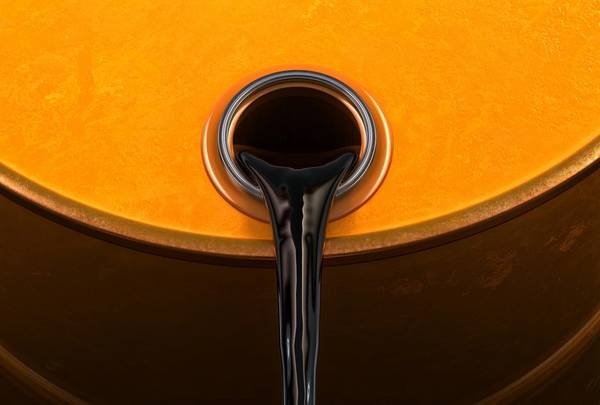
Oil investors will usher in 2024 with gnawing concerns about oversupply, slowing economic growth and simmering Middle East tension that could spark price volatility.
Benchmark Brent has averaged around $80 a barrel this year, after a volatile 2022 in which prices surged above $100 after Russian supplies were disrupted following the start of the Ukraine war.
Prices have been capped by a strong dollar and robust non-OPEC output despite demand hitting an all-time high of more than 100 million barrels per day (bpd).
A Reuters survey of 30 forecasts from economists and analysts sees Brent crude averaging $84.43 a barrel in 2024.
Those expectations come despite demand growth forecasts which range from 1.1 million bpd by the International Energy Agency to 2.25 million bpd expected by the Organization of the Petroleum Exporting Countries (OPEC).
Supply in 2024 is expected to grow by between 1.2 million and 1.9 million bpd, driven by non-OPEC producers, say consultancies Rystad Energy, J.P. Morgan, Kpler and Wood Mackenzie.
"We're looking for an oversupplied market every quarter of next year," said Vikas Dwivedi, a global energy strategist at Macquarie.
Here's a look at the key factors to watch in 2024.
OPEC+ Compliance
Investors are eyeing first-quarter supply data to see whether OPEC and its allies, known as OPEC+, followed through on their planned 2.2 million bpd in voluntary output cuts.
If the group complies, it could lead to a small deficit of less than 500,000 bpd, ANZ said.
WoodMac's Ann-Louise Hittle said: "The first quarter will be key because we can assess adherence to the OPEC+ voluntary supply cuts."
OPEC+ would not need to extend their voluntary cuts beyond the first quarter based on Woodmac's current demand forecast, she added.
Energy Aspects expects Saudi Arabia to taper its cut over the second quarter after it referred to restoring supply gradually, but added that did not prevent Saudi from extending its cuts in full again if required.
Wild cards - Russia, Iran, Venezuela
Venezuelan oil has returned to global markets since Washington suspended sanctions on the OPEC producer for six months, until April.
Another six-month extension is likely as long as President Nicolas Maduro's government sticks to an electoral roadmap agreed with the opposition for a presidential election, JP Morgan analysts said.
"Late 2024 presidential elections in both countries would determine the longer-term fate of U.S. sanctions and Venezuelan oil production," they added.
The lifting of sanctions on state-run oil company PDVSA will gradually increase Venezuelan oil output from 760,000 bpd in 2023 to 880,000 bpd in 2024 and 963,000 bpd in 2025, JP Morgan said.
The resumption of Venezuela's heavy crude supply to the United States and India may dampen demand for rival grades such as Iraq's Basrah Heavy and Canada's Cold Lake, traders said.
More U.S. crude could be available for exports to Asia as Gulf Coast refiners process more Venezuelan oil, they said.
Analysts expect Russian and Iranian oil to keep flowing to global markets despite sanctions, holding down pump prices ahead of the U.S. elections.
Iran has targeted crude output of 3.6 million bpd by March 2024, up from 3.4 million bpd now.
New refineries
Tightness in refined products, particularly diesel in the aftermath of Russia's Ukraine invasion, is set to ease with more than 1 million bpd of new refining capacity coming online in China, India, Mexico, the Middle East and Nigeria in 2024, analysts said.
These include Chinese newcomer Yulong Petrochemical, expansions at India's Panipat and Koyali refineries, Nigeria's Dangote project and Mexico's Dos Bocas.
Crude quality mismatch
Non-OPEC producers led by Brazil, Guyana and the United States are set to drive output growth in 2024, boosting supply of light sweet oil, while medium sour grades are set to stay tight on OPEC+ cuts.
This could narrow price spreads between crude grades globally, Macquarie's Dwivedi said, with medium grade crude trading close to parity with light sweet from a typical discount of $2-$4 a barrel, while the discount for heavy versus light crude could narrow to about $4 a barrel from $8 previously.
A big portion of refining capacity in China, India and the United States is designed to run on heavier crude, which could tighten in supply when refineries resume operations after second-quarter maintenance.
"This complicates refinery yield optimisation and limits operational flexibility for expanding product supply," said Rystad Energy's Mukesh Sahdev.
WoodMac analyst Alan Gelder said China and India would increasingly source their crude from the Atlantic Basin, with Asia and the United States competing for heavy barrels.
The United States and India could turn to Venezuela for more heavy crude, while China and India are anticipated to continue relying on supplies from Russia and Iran, analysts said.
"India is arguably in the best position ... so the relative profitability of Indian operations will improve even further," said Kpler analyst Viktor Katona.
(Reuters - Reporting by Muyu Xu, Stephanie Kelly and Alex Lawler; editing by Florence Tan, Clarence Fernandez and Jason Neely)